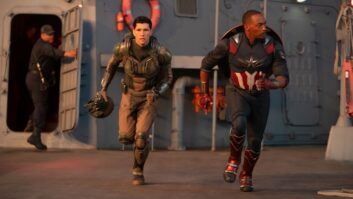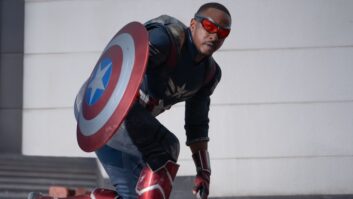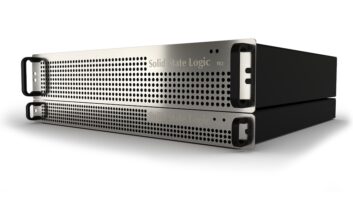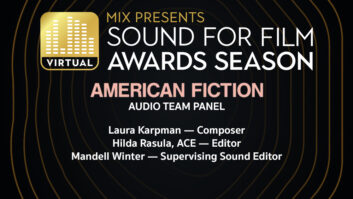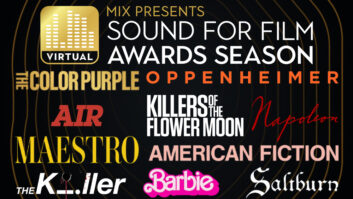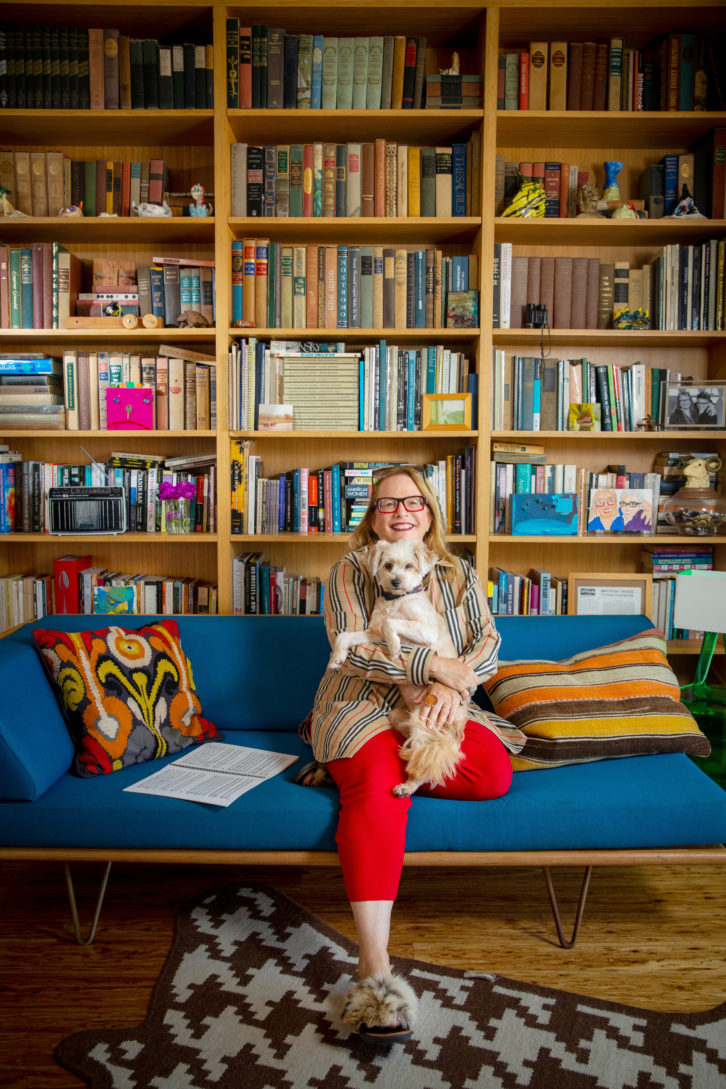
The last time Laura Karpman and Raphael Saadiq saw each other in-person was on February 28, 2020, the final date of Saadiq’s “Jimmy Lee Tour.” The two began work on the HBO series Lovecraft Country the very next day, just as much of the world started locking down.
Lovecraft Country is the latest of Karpman’s and Saadiq’s collaborations, which include the films Black Nativity and Step and the series Underground, also from Misha Green, creator/producer/writer of Lovecraft Country. They each have extensive studios, Karpman’s multiple-room, acoustically treated space taking up the bottom floor of her Playa del Rey home and Saadiq with his high-end Blakeslee Recording Co. complex.
For Lovecraft Country, Saadiq begins most of the cues on his own, with a sound design aesthetic, using both digital and analog gear or acoustic instruments. Karpman takes what he sends her, sometimes manipulating it, sometimes not, which, in turn, informs her writing of the orchestral material for the score.
“At the beginning of episode 101 I said, ‘I want you to play a drum solo,’” Karpman gives an example of her working process with Saadiq. “He would not call himself a drummer, but I love the way he plays drums. It’s not quite like anything else you’ve heard. I took what he did and played with it going forward, backward, adding distorted reverbs at times, having it clean at other times. That solo became a huge part of the episode. The way we work together is fluid. After I do all the orchestral score, I might go back and ask him, ‘Can you give me a bass to add to this, or a guitar?’”
Trained as a classical and jazz pianist from a young age, as well as a vocalist, the multiple Emmy- and Grammy-winning Karpman has a Ph.D. in composition from The Juilliard School. Her extensive collection of instruments includes her childhood Steinway, various keyboards, as well as collectibles from over the years. As she says, “If you can make a sound out of it, you can bring it into the house.”
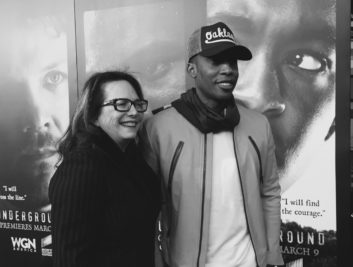
Karpman—the founding president of the Alliance for Women Film Composers and a governor of the music branch of the Academy of Motion Pictures Arts and Sciences—is just as comfortable working within Pro Tools and the plug-in sphere as she is on any variety of instruments. She favors the DAW for its ease in recording sound and later manipulating that sound quickly, which is conducive to the high-speed production of television in particular. There are about 12 settings she returns to with plug-ins.
“In television, especially, there’s no time to mess around; you have to go for it fast,” she says. “I love Soundtoys, Valhalla Super Massive, Serato Pitch ‘n Time—not just for putting something in tune, but for creating harmonies or taking something down three octaves and having it sound different. In Lovecraft episode 105, there’s sound that’s heard when people don’t quite connect. It’s a marimba and a vibraphone, but they’re floating in a very custom vintage Valhalla VintageVerb. I like the plug-in mix stuff where you can get a really old-school sound. Funny things in Spectrasonics Stylus where you can play with needle scratches. I like stutter edit for certain things.”
Lovecraft Country is a multiple-genre anthology series set in 1950s America, which has horror and suspense, plus fantasy and action, in equal parts. Karpman’s 30-plus years of composition experience was put to the test, avoiding any of the formulaic sounds that are characteristic of these genres yet creating a score that is very identifiably belonging to that genre.
“There’s three sides to that,” Karpman explains. “One, [Saadiq] brings something unique. Second, there are major themes that run through the show that are essential in tying together episodes. What I love about scoring the show so much is it feels like me. I am somebody whose aesthetic evolved out of mid-20th century modernism. When I was a kid I was listening to Stravinsky and Bartok, Bernard Herrmann, and Ernst Korngold. Third, and this was not intentional. The way we are recording it gives it a unique sound. It makes me think about orchestration differently. That contributes to the sound of the show and makes it feel like Lovecraft.”
Recording a Remote Orchestra
Two weeks into the pandemic, Karpman had no choice but to start the Unison Orchestra. Coming together with engineer Brad Haehnel and contractor Lisa Liu, they put together a remote global orchestra where every musician recorded themselves at home and Haehnel put the parts together. He was also tasked with training the musicians on how to record themselves and guiding them through physical details of recording, such as the basics of microphone placement.
“I did a screen record on my Mac with a high-quality microphone,” says Haehnel. “I created I/O settings and track presets all named the way I needed them. The videos show the musicians where to put the files and how to use them. The musician simply creates their pre-named tracks, creates a new playlist and hits Record. If there was still trouble, I use TeamViewer to get on their computer and show them. Sometimes I will actually run the session remotely on their computer. Using Audiomovers software, I can monitor back at my studio at high quality and make sonic and production decisions easily.”
With each musician having their own unique home scenario with varying levels of acoustic settings and recording expertise, Haehnel provided a tutorial on acoustics and microphone placement. He didn’t want to impose the cost of new or additional recording gear on the musicians so he tried to work within their parameters.
“Many of the musicians are already experts at editing,” he says, “I always want the original edit back because I may need to open things up to make the musical phrase work between all the players. This type of final musical editing I do myself. I have a team of three people coordinating and editing between composer, orchestration, musician, and myself mixing and music editorial. I have to say, I’m quite surprised by the results. So many different instruments, players, mics and pre’s have made for a very authentic sound. It sounds like it should have been a nightmare, but it really sounds great.”
Haehnel assured Karpman that with close-miking there wouldn’t be the need for the highest-quality microphones, and he was right. “When we heard the first mixes come back, it sounded like Jerry Goldsmith,” says Karpman. “It sounded like film scores from the ‘50s and ‘60s that were close-miked, that didn’t have that big fullback sound of the scoring stage. Even if they were recorded on a scoring stage, it just wasn’t the aesthetic at the time. I loved it, and it became another element to play with. When did we want it to sound small, and when did we want it to sound big?
“As I got used to writing for this particular ensemble, I also started changing the way I thought about things orchestrally,” the composer continues. “You can hear things because you have total separation. It’s this combination of obscuring the individuality and going for that individuality. That became part of the sound, too, and it’s pretty unique to Lovecraft.”
The score and the sourced music, which could be current, or period, or from another era altogether, play off each other seamlessly—an attribute Lovecraft Country shares with Underground. Karpman credits Green for being “one of the most effective collaborators in terms of using music as a tool in her projects.” Specific in her notes, Green is hands-on with connecting the mood and actions of the scene to the direction she gives Karpman. This carries to the different stories and styles of each episode of the anthology.
“The show leans on a lot of different influences” says Karpman. “It leans on jazz and blues and R&B, bringing that into an orchestral setting. It leans on dissonance and aleatory writing to a certain extent. It plays with all of those things and it gives it a sound. But I’m responsive to what’s happening with the needle drops, as well. On Episode 105 a flute was featured, and I made the flute the major instrument
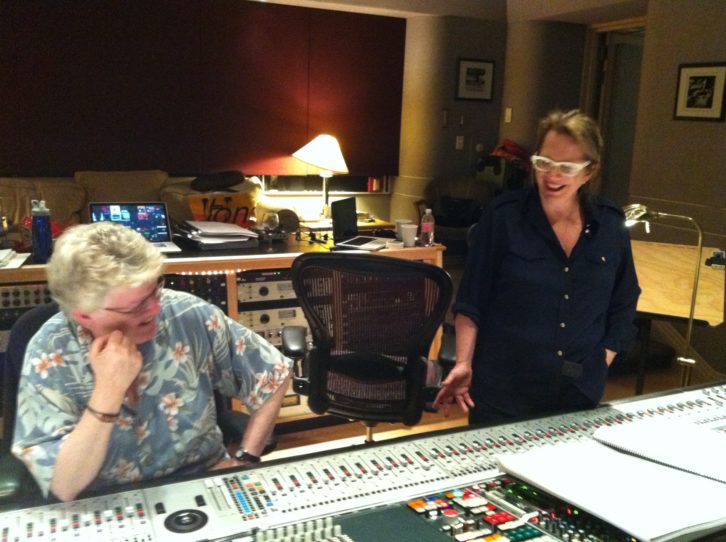
of the episode, weaving it through. Being responsive to what I hear makes it feel tighter.
“A lot of it is really paying attention to the technical,” she adds. “What key is this in? Let’s push the score up to the point, keep it in the same key. Maybe introduce a chord progression early in the score so there’s a seamless transition to the song, or layer the score on top of the song for a minute and then come into the song. It’s not like, ‘Oh that’s soundtrack, and now we’re getting to score.’ We’re all concerned with creating the sonic world of Lovecraft, and that encompasses songs and score and spoken word and all of these different elements that work together and everything is on the table.”
Finding Space in Documentaries
The Steven Spielberg/Alex Gibney-produced six-part Discovery Channel docu-series Why We Hate—for which Karpman is nominated for two Emmys—Main Title Theme and Outstanding Music Composition for a Documentary Series or Special (Original Dramatic Score)—is not dissimilar to Lovecraft in that each episode has a focus, but there are also through-thread themes. The directors’ intention is to have the series feel like one concept, rather than six separate ones, exemplified by Karpman’s main title theme.
The core sounds are from a string quartet, piano by Karpman, percussive instruments, woodwinds, solo bass and harp, with an idea of keeping everything handmade. Karpman already had picture to which she was scoring, but as is the case with documentaries, scenes are often shifted to entirely different sections and she had to be ready to adjust accordingly.
“It’s what makes documentary filmmaking so vibrant,” says Karpman. “The filmmakers I work with are generally very open to me asking for ‘another 10 seconds to finish a musical thought,.’ or a ‘voiceover or off-camera dialog is in the way of what’s going on dramatically in the picture, can we delay that 10 or 15 frames so I can have this musical moment?’”
This was the case for the episode she received the Emmy nomination, “Tools and Tactics,” one of the many instances in Why We Hate where sensitivity to the issue on screen doesn’t need to be pre-amplified and over-amplified by the music.
Says Karpman, “Geeta Gandbhir, one of the directors, said she wants to have a neutrality for the moment to resonate, and then for the music to come in to bring it home. Sometimes that has to do with spotting, where the cue starts, but sometimes, it has to do with how you evolve musically so that you might have something that is more neutral, and then it goes to something that comments on what you perceived rather than making the comment on what you perceived.”

